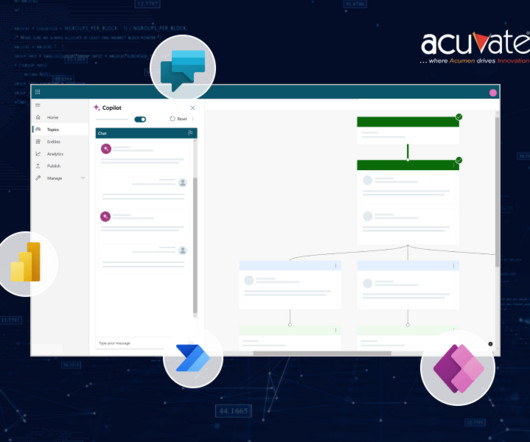6 Remarkable Applications of AI in the Oil & Gas Industry
Acuvate
OCTOBER 10, 2022
Consequently, like every other sector, O&G is exploring the vast potential of Artificial Intelligence (AI) applications to increase productivity, boost security, enhance equipment availability, maintenance, and uptime, and enable sustainable operations. AI Applications in the Oil and Gas Industry. Driving workplace safety.















Let's personalize your content